Key Play Breakdown: Duke's Jump Pass Gets Intercepted

Duke’s final offensive play of the loss at North Carolina was one that generated plenty of shock and outrage on social media.
With the Blue Devils facing first and goal from the two, with 18 seconds left, trailing UNC by three, Duke had one or possibly two shots at the end zone before trying a field goal chip shot to send the game to overtime.
The Blue Devils ran a trick play, handing the ball to running back Deon Jackson, who looked like he was going to run it up the middle. He stopped short, however, and threw a jump pass to tight end Noah Gray that was picked off in the end zone by linebacker Chazz Surratt, clinching the game for the Tar Heels.
Watching Chazz Surratt's game-winning interception with Titanic music makes it so much better pic.twitter.com/ELZ6nV1tA9
— Luke Buxton (@LukeBuxton_) October 27, 2019
Coach David Cutcliffe said afterward that the play had worked in the past, most notably on senior day against Georgia Tech in 2017, when running back Shaun Wilson threw a four-yard touchdown jump pass to tight end Daniel Helm.
First, let’s look at the play as run successfully.
The situation: Duke had second and goal from the four, one minute into the fourth quarter. Duke had rushed for 234 yards through three quarters, including 115 by Brittain Brown, 65 by Shaun Wilson and 54 by quarterback Daniel Jones. The Blue Devils were leading by 10, 30-20 and had scored the last 17 points.
The formation: Duke lined up in a run set, with one receiver out wide, two tight ends attached to the line, a third in the H-back spot, just behind the left guard, and Wilson at running back. Georgia Tech put 10 in the box, expecting to make a goal line stand.

The snap: Daniel Jones hands off to Wilson at the 10 yard line

Jones then drops back another two yards, giving the defense the impression that he’s running play action.

On the left side of the line, Helm blocks two guys, then releases and heads to the end zone. Two edge rushers, one on each side, follow Jones deep into the backfield. Wilson pulls up a yard behind the line of scrimmage and releases a pass. Helm is at the goal line, alone, at that point.
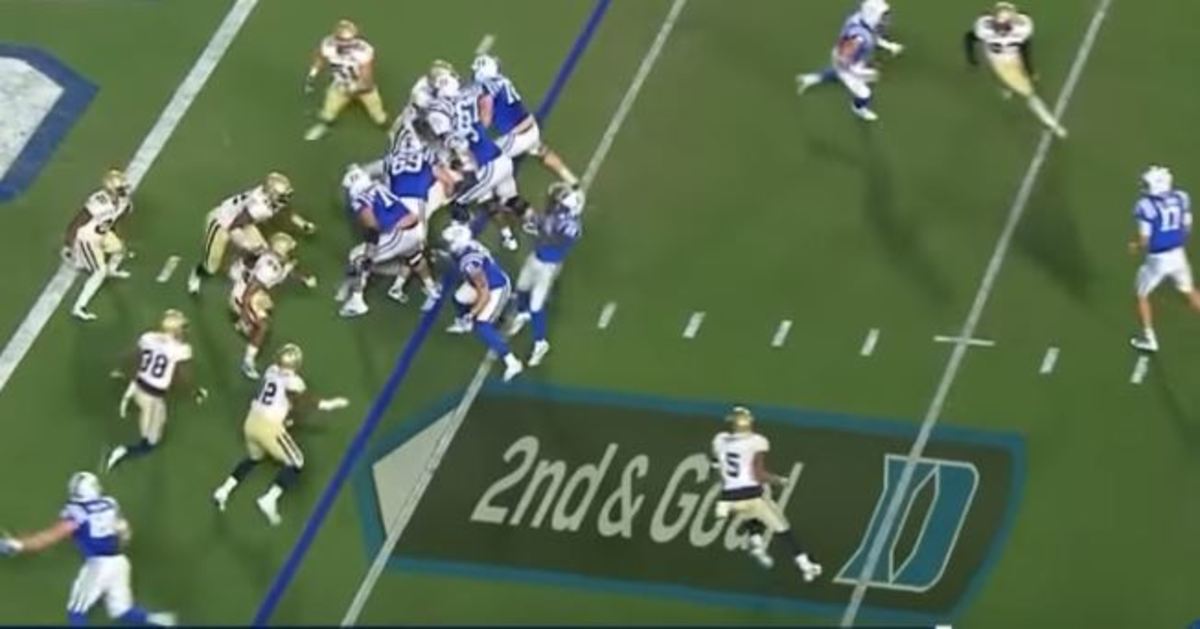
He drifts three yards into the end zone and catches the pass, with the nearest defender bearing down from three yards away.
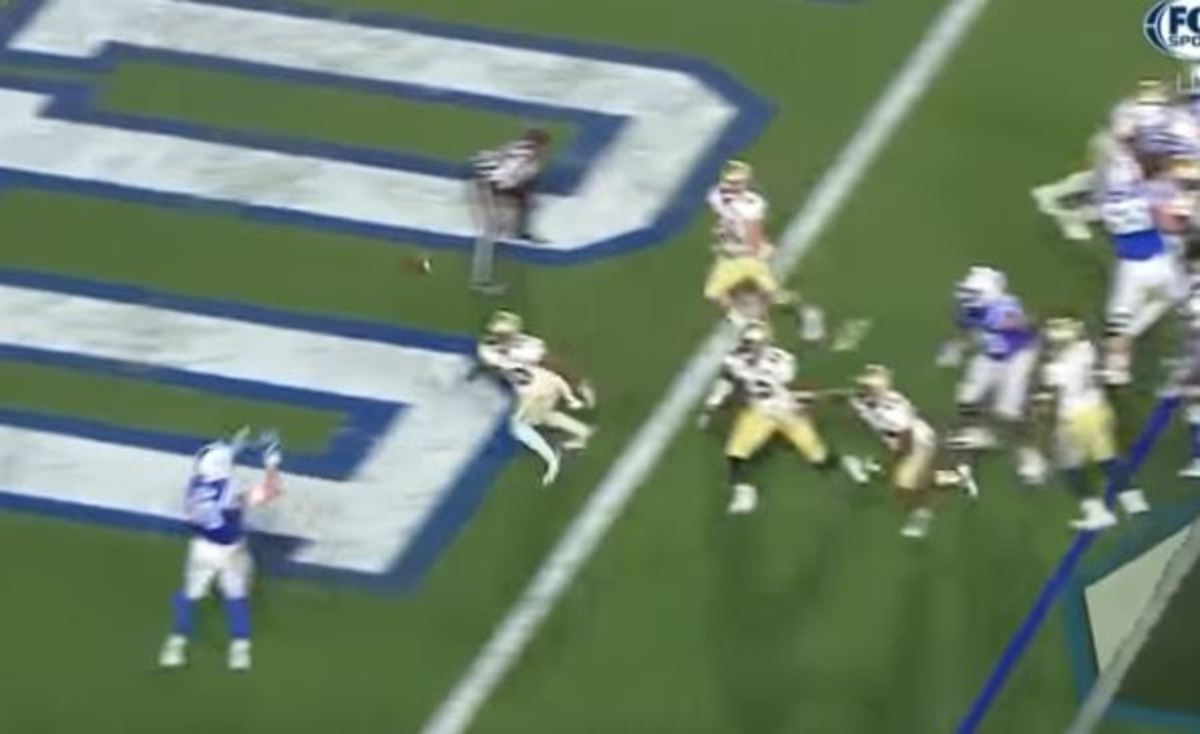
As with many hit movies, the sequel is not always as good as the original. Let’s take a look at the play on Saturday, which had some key differences from the one run against Tech.
The situation: Duke had first and goal from the two. The biggest difference was time and score. There were 18 seconds left in the game, and Duke was out of time outs. The Blue Devils had just 100 yards rushing on the day, a 2.7 yard average. So Duke wasn’t gashing the Tar Heels on the ground like it was Georgia Tech.
That set-up makes it far less likely that Duke would run the ball up the middle. If Jackson is stopped, Duke will need to scramble to get in place to spike the ball and stop the clock in time for a field goal attempt. A run basically forfeits one or two more shots at the end zone. So North Carolina isn’t likely to bite as hard on the run action as Georgia Tech did, at a time in the game when a run made much more sense.
The formation: Here’s the next problem. Duke has a wide variety of different sets it uses on offense, from five wide to triple option, but it rarely uses one that has three tight ends and just one receiver out. The unusual formation rang a bell for UNC defensive coordinator Jay Bateman, and the Tar Heels called time out.
“Before the play, we got in the huddle and Coach Bateman said to expect the pop pass,” Surratt said. “It’s kind of the formation they were giving us, so that’s what we did. We just kind of played it.”
Because Duke was in a run set at a time when running would be a near fatal mistake if the Blue Devils don’t make it into the end zone, the Heels knew the play was coming. The fact that they called time out could have raised a red flag to Duke that the surprise was ruined, but the Blue Devils stuck with the play call.
The play is a mirror image of the Georgia Tech play. Gray is on the right side of the line instead of the left, and the wide out is flipped to the left side. Carolina, like Tech, has 10 in the box.
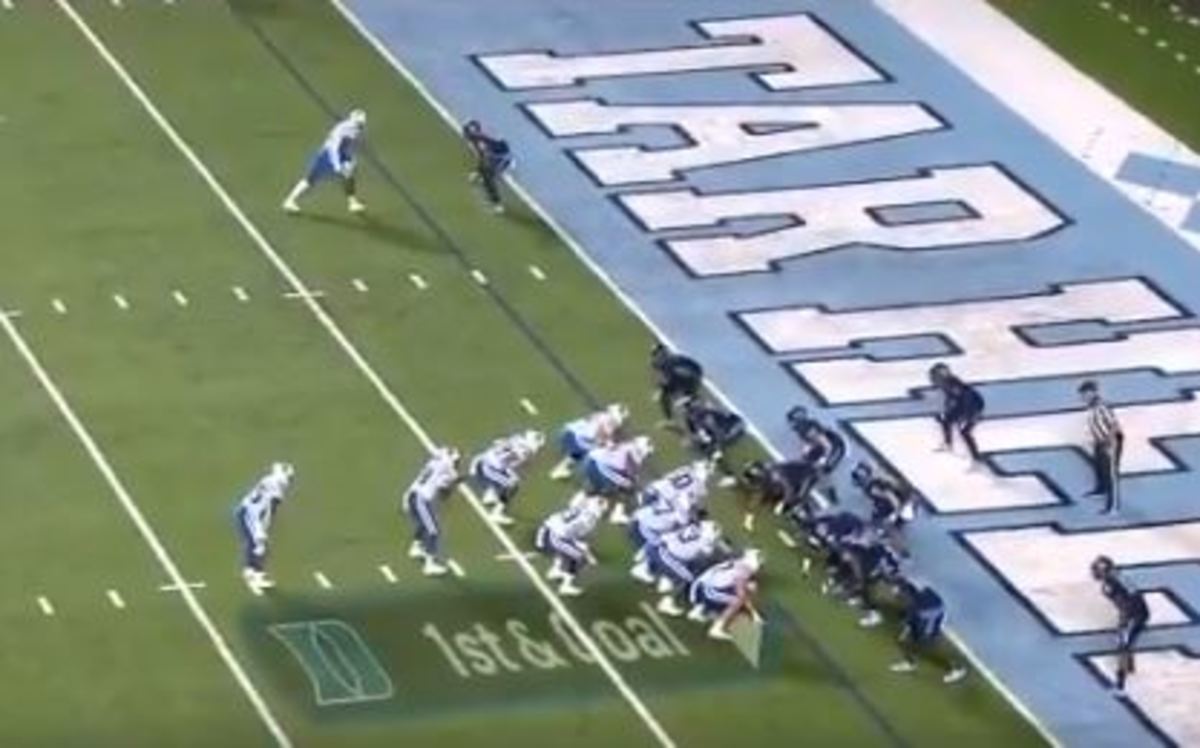
The snap: Carolina’s defensive approach and fatal mistakes by two of the key players on the Duke offense make this play dead on arrival.
First, quarterback Quentin Harris doesn’t drop back after taking the snap. He turns immediately to the side and hands Jackson the ball at the seven.


Jones dropped back one yard for the handoff and kept going. The extra yard may not seem like much, but it speeds up the action and compresses the play at a time when fractions of a second are critical.
Then he stands up straight to watch the play. There’s nothing to show the defense he might still have the ball for a play action pass, and the UNC ends, as a result, aren’t drawn into the backfield. One of them, DJ Ford, makes an immediate right turn and zeroes in on Jackson, instead of heading back toward Harris. Had Harris dropped or rolled out, he might have drawn Ford away, just for a step or two, and that’s all Jackson needed. Instead, Ford hits him as he releases the pass.
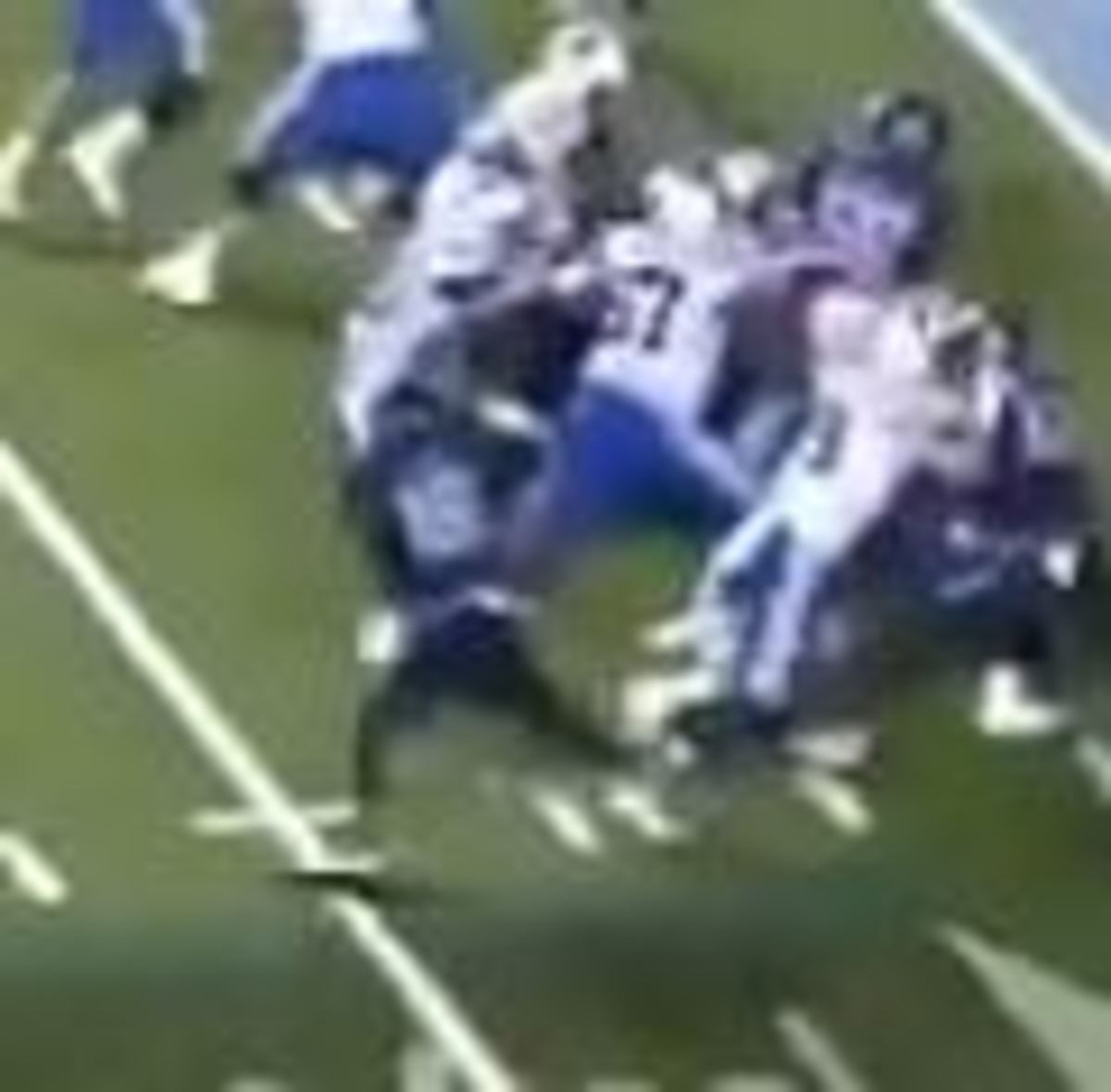
Ford is also the beneficiary of the other fatal mistake by Duke. Gray makes a token effort of showing block before heading toward the end zone. He never even turns toward Ford, who easily goes around him on the outside.

On the Georgia Tech play, Helm gets a solid two-hand hit on the end.
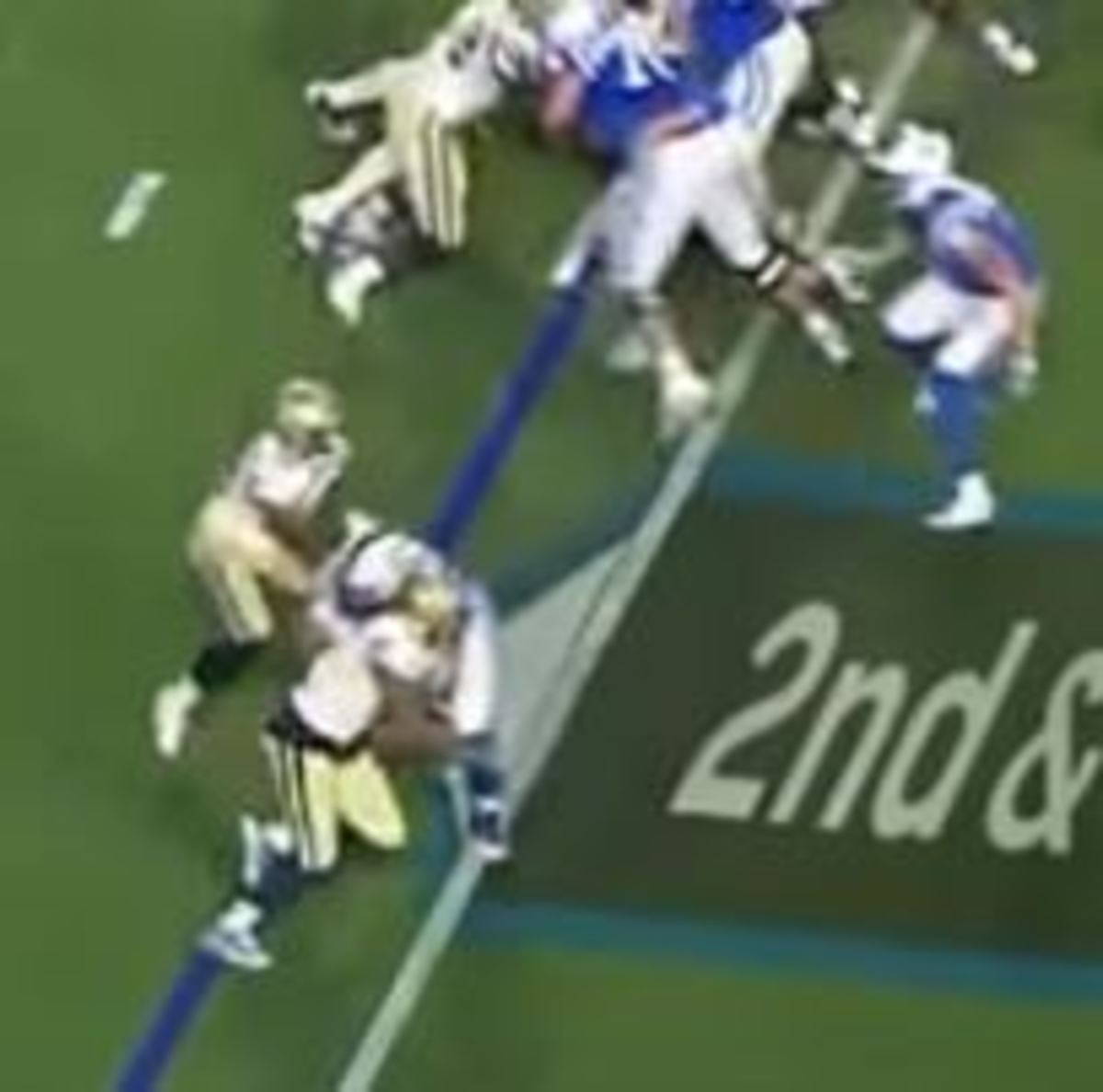
A similar action from Gray could also have given Jackson the extra step he needed to get the pass off cleanly.
Even if he had, however, it wouldn’t have mattered. Unlike Helm, Gray is never open. Carolina has four of the 10 men in the box remain in place, to cover potential passes to the end zone.

One of them, Surratt, picks off the pass at the front of the end zone.
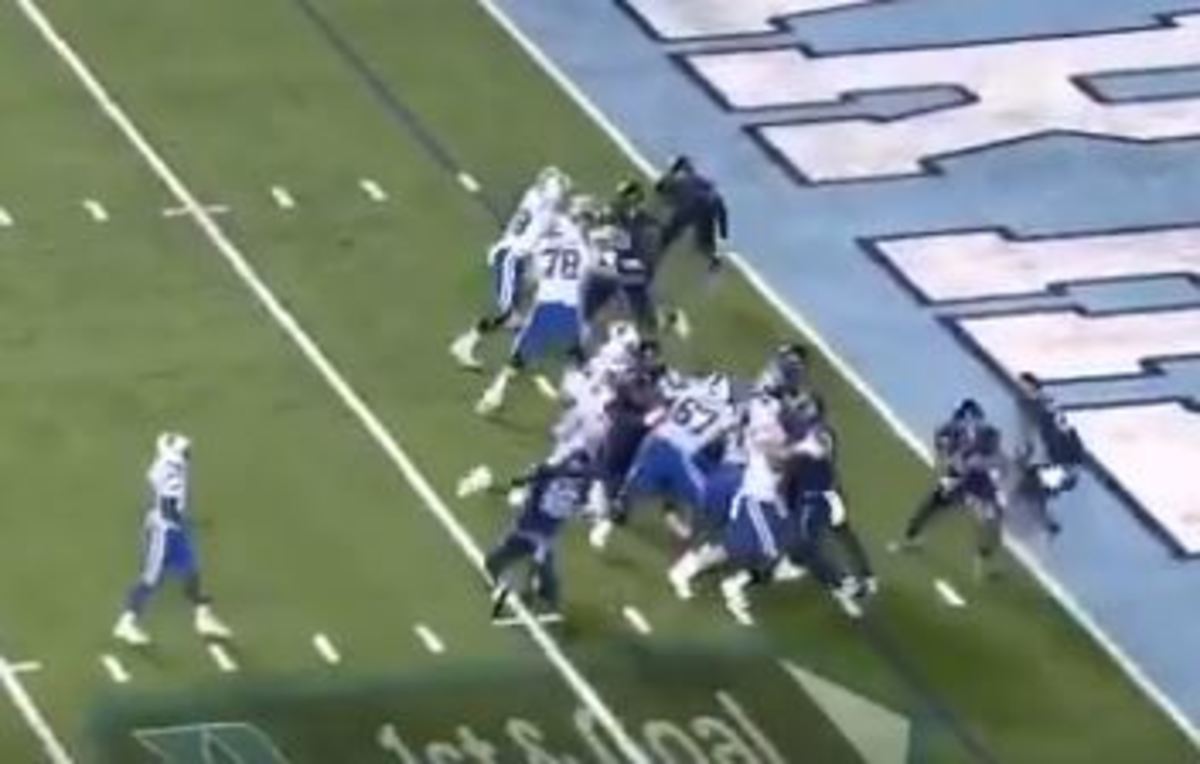
Two more have Gray double covered.
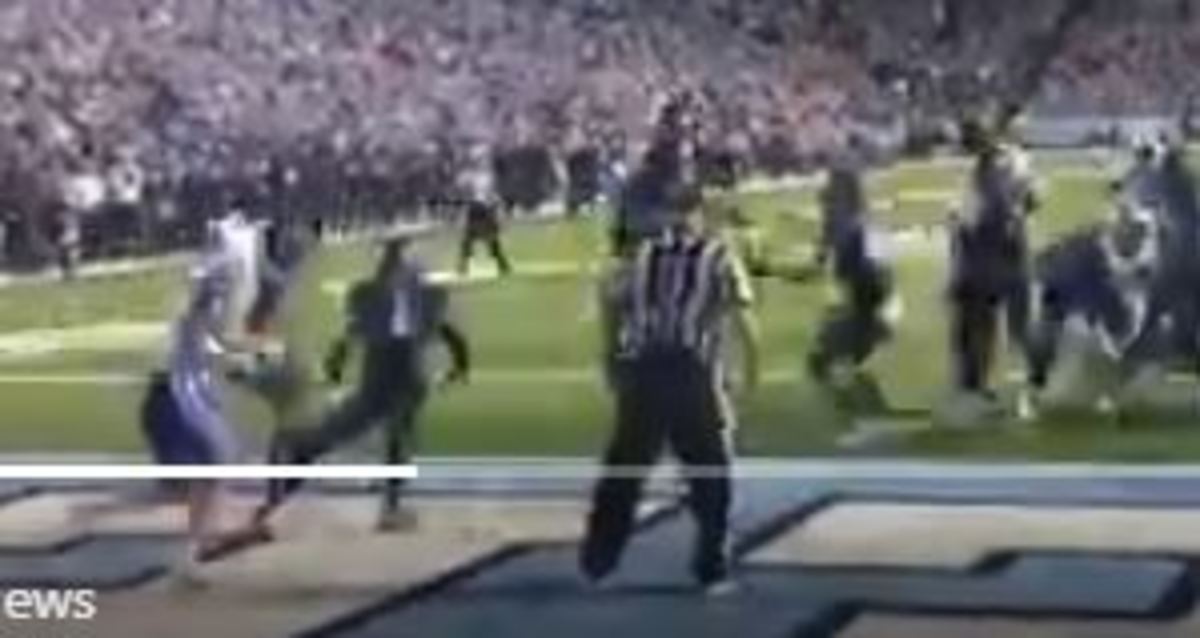
Trick plays are an intricate dance. Everyone needs to do their job, or else things can go haywire, and the defense also needs to cooperate by falling for it. Harris not selling the pass, Gray not making a block, and a time when the element of surprise just isn’t there are three strikes for this play at a crucial time in the game.
Here's Cutcliffe discussing the play during his postgame comments.
